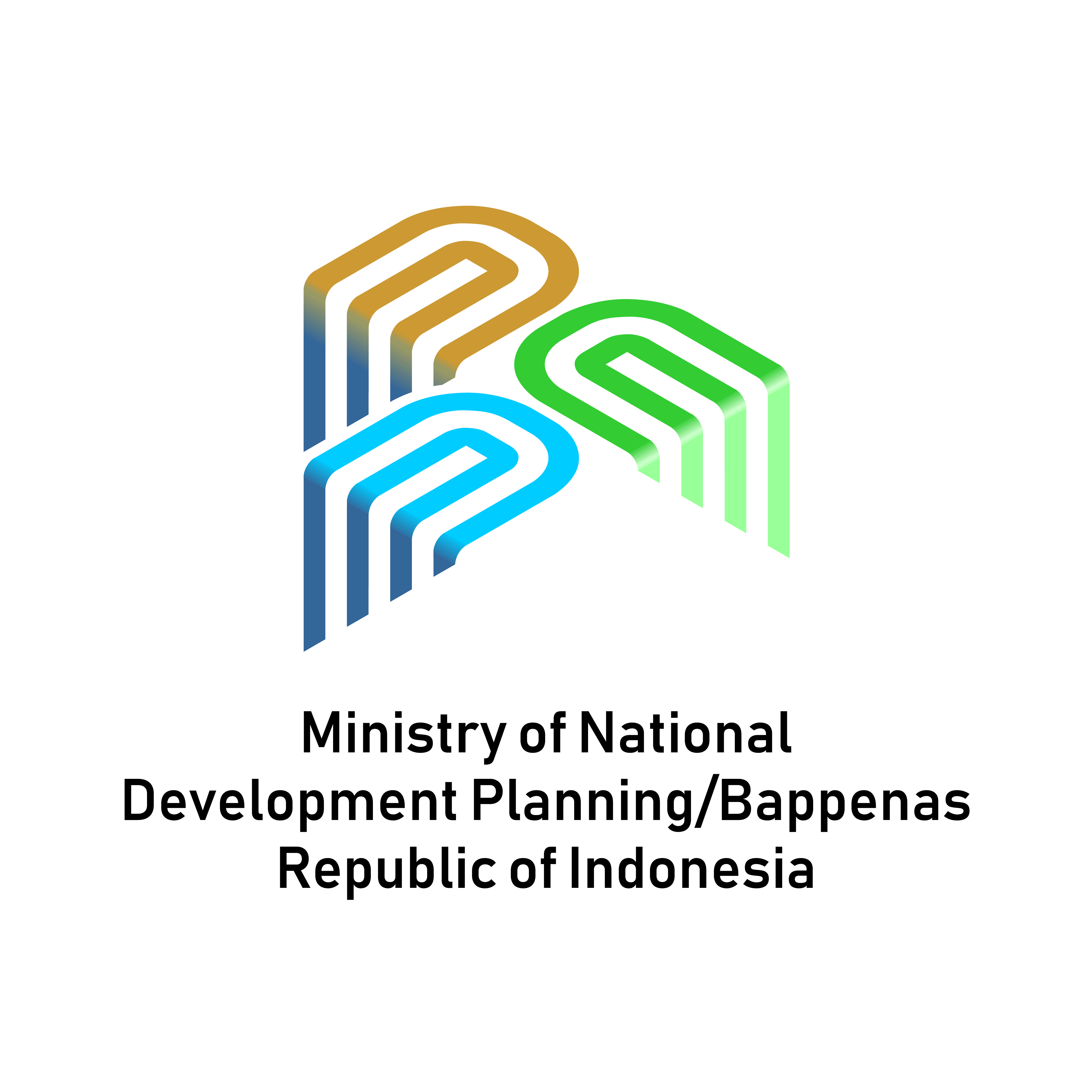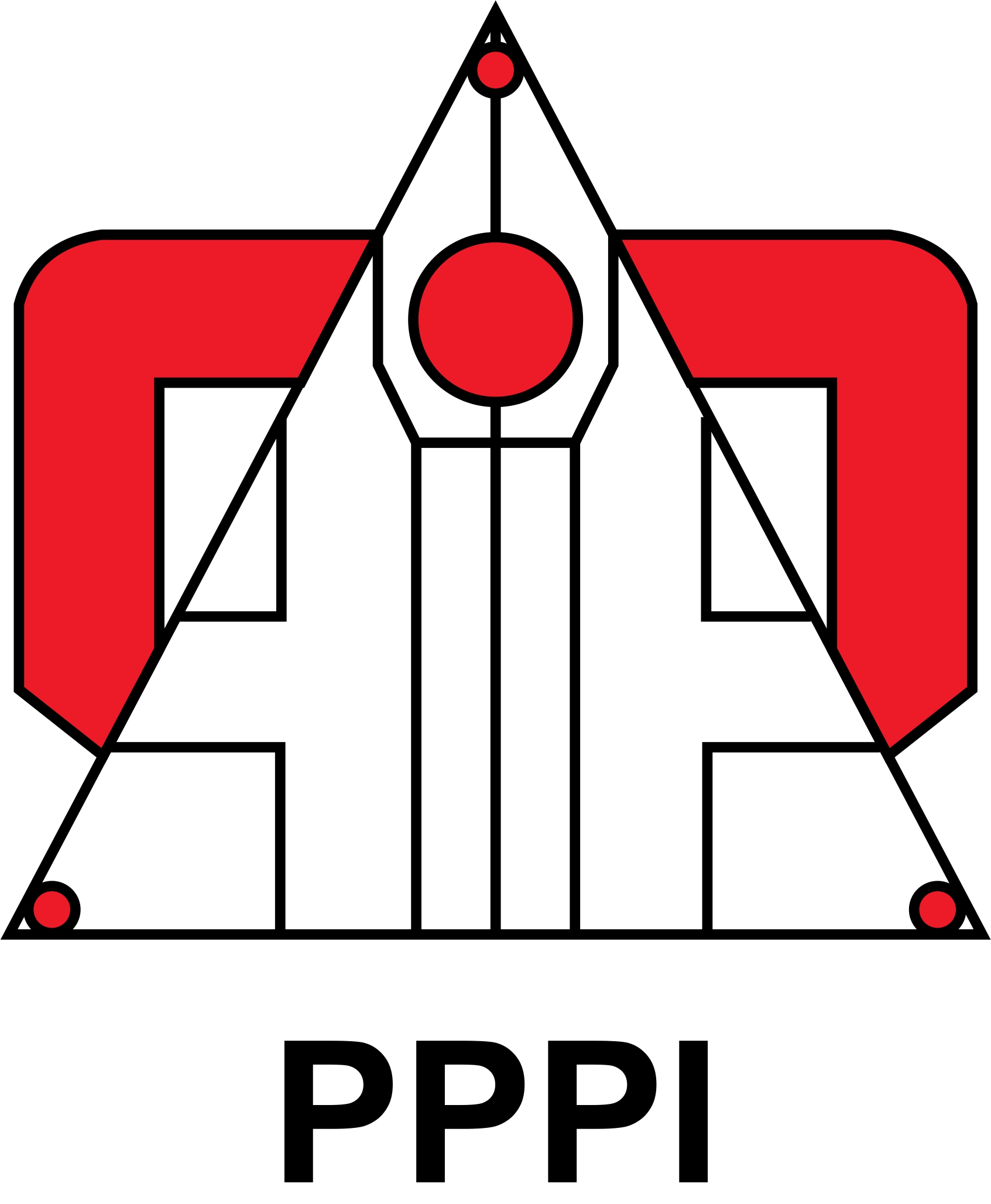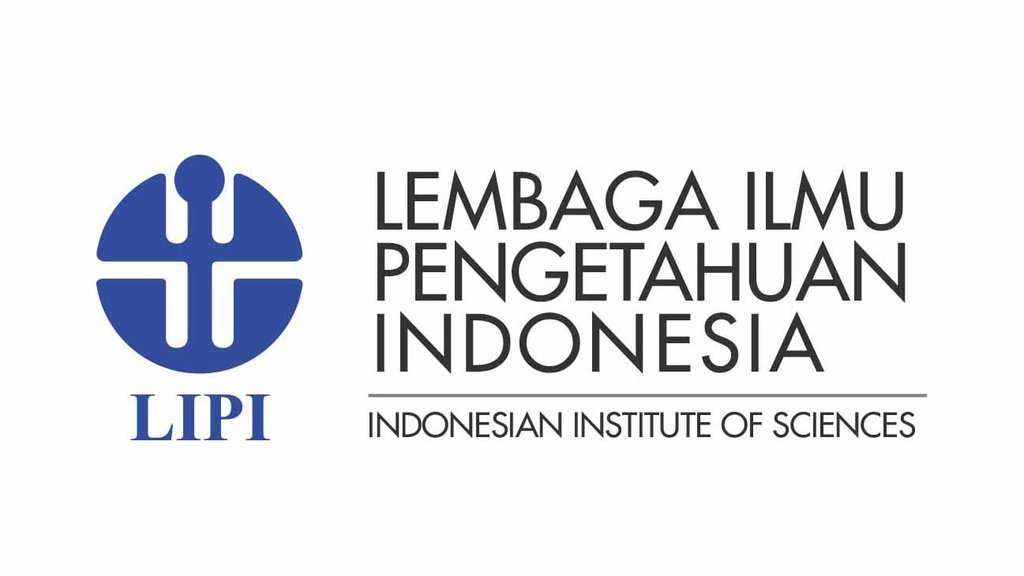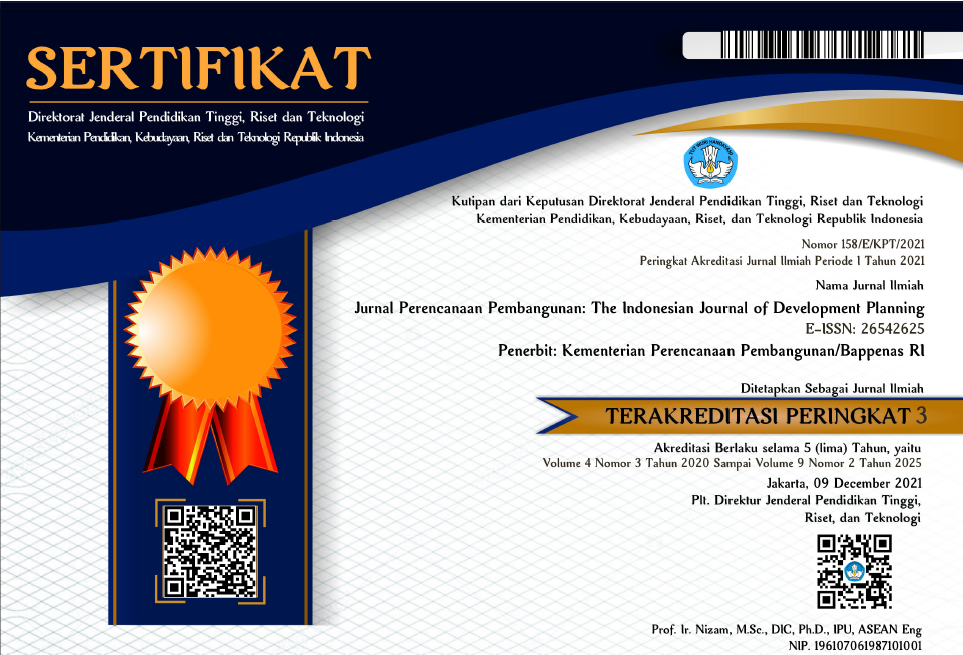Access of Information, Communication, and Technology (ICT) and Learning Performance of Junior High School Students in Indonesia: Analysis at the District Level
DOI:
https://doi.org/10.36574/jpp.v6i3.267Keywords:
ICT, learning performance, computer-based national examinationAbstract
One of the goals of educational development is that education must be accessible to everyone. Both accessibility and quality of education have to be attained to assure human resource development. Unfortunately, the academic achievement of Indonesian students in recent years is still unsatisfactory. Meanwhile, the development of Information and Communication Technology (ICT) is inseparable from human life. ICT has become one of the solutions to improve educational quality. This study aims to analyze the effect of ICT access on the learning performance of Indonesian junior high school (SMP) students. ICT access in this study focuses on basic facilities and infrastructure that schools must possess based on indicators of sustainable development goals, namely availability of computers, access to the internet, and electricity. This study uses cross-sectional data from regencies/cities in Indonesia in 2018 with the Ordinary Least Square (OLS) model based on the theoretical framework of education production functions using Computer-Based National Examination (UNBK) data as a dependent variable. Study results show that the availability of computers in schools and ICT facilities in households has a significant positive effect on the learning performance of SMP students in Indonesia. Meanwhile, the availability of access to electricity and school internet has not affected the learning performance of SMP students. The independent control variables of school characteristics (the student-to-teacher ratio and class conditions) and socioeconomic characteristics (population density) show significant positive results on the learning performance of SMP students. National examination scores in Eastern Indonesia tend to be lower than those in other regions. In this regard, the government needs to focus on the improvement and equity of ICT resources.
Downloads
References
Aziz, Tahir, Mo. B Khan & Singh,R. (2010). Effects of Information Technology Usage on Student Learning: An Empirical Study in the United States. International Journal of Management Vol. 27 No. 2 August 2010.
Appiah, E. N., & McMahon, W. W. (2002). The Social Outcomes of Education and Feedbacks on Growth in Africa. Journal of Development Studies, 38(4), 27–68.
Barrios Aguirre, F., Forero, D. A., Castellanos Saavedra, M. P., & Mora Malagón, S. Y. (2021). The Impact of Computer and Internet at Home on Academic Results of the Saber 11 National Exam in Colombia. SAGE Open. https://doi.org/10.1177/21582440211040810.
Barro, Robert J. (1990). Government spending in a simple model of endogeneous growth. Journal of Political Economy 98(S5): 103-125.
Barro, R. J., & Lee, J.-W. (2001). International Data on Educational Attainment: Updates and Implications. Oxford Economic Papers, 53(3), 541–563. http://www.jstor.org/stable/3488631.
Bariu, T. N. (2020). Status of ICT Infrastructure Used in Teaching and Learning in Secondary Schools in Meru County, Kenya. European Journal of Interactive Multimedia and Education, 1(1), e02002. https://doi.org/10.30935/ejimed/8283.
Delen, E., & Bulut, O. (2011). The Relationship between Students' Exposure to Technology and Their Achievement in Science and Math. Turkish Online Journal of Educational Technology, 10, 311-317..
Erdogdu, F., & Erdogdu, E. (2015). The impact of access to ICT, student background and school/home environment on academic success of students in Turkey: An international comparative analysis. Comput. Educ., 82, 26-49.9.
Glewwe, P., Lambert, S., & Chen, Q. (2020). Education production functions: Updated evidence from developing countries. In The Economics of Education: A Comprehensive Overview (pp. 183-215). Elsevier. https://doi.org/10.1016/B978-0-12-815391-8.00015-X.
Gupta, Sanjeev & Verhoeven, Marijn & Tiongson, Erwin R., (2002). "The effectiveness of government spending on education and health care in developing and transition economies," European Journal of Political Economy, Elsevier, vol. 18(4), pages 717-737, November.<https://ideas.repec.org/a/eee/poleco/v18y2002i4p717-737.html>.
Hanushek, E. A., (1979). Conceptual and Empirical Issues in the Estimation of Educational Production Function. The Journal of Human Resource, 14(3), pp. 351-388.
Hanushek, E. A., (1986). The Economics of Schooling: Production and Efficiency in Public Schools. Journal of Economic Literature, pp. 1141-1177.
Hanushek, E. A. & Kimko, D. D., (2000). Schooling, Labor Force Quality, and the Growth of Nations. American Economic Review, 90(5), p. 1184–1208.
Hanushek, E. A. & Luque, J. A., (2003). Efficiency and Equity in Schools around the World. Economics of Education Review, 22(5), p. 481–502.
Hanushek, E. A. and Woessmann, L. (2012). Do better school lead to more growth? Cognitive skills, economic outcomes, and causation. Journal of Economic Growth, 17, 267–321. https://doi.org/10.1007/s10887-012-9081-x
Hanushek, Eric A., (2013)."Economic growth in developing countries: The role of human capital," Economics of Education Review, Elsevier, vol. 37(C), pages 204-212.<https://ideas.repec.org/a/eee/ecoedu/v37y2013icp204-212.html>.
Hendarman. (2012). Peran Dewan Pendidikan dalam Meningkatkan Mutu Pelayanan Pendidikan. Jurnal Pendidikan Dan Kebudayaan, 18(1), 34-44. https://doi.org/10.24832/jpnk.v18i1.67.
Ishaq, Kashif & Mat Zin, Nor Azan & Rosdi, Fadhilah & Abid, Adnan & Ijaz, Hafiz. (2020). The Impact of ICT on Students' Academic Performance in Public Private Sector Universities of Pakistan. International Journal of Innovative Technology and Exploring Engineering. 9. 2278-3075. 10.35940/ijitee.C8093.019320.
Machin, S., Mcnally, S., & Silva, O. (2007). New Technology in Schools: Is There a Payoff? Labor: Human Capital.
Nikolopoulou, K., & Gialamas, V. (2013). Barriers to the integration of computers in early childhood settings: Teachers’ perceptions. Education and Information Technologies, 20, 285-301.
Rajkumar, Andrew Sunil and Swaroop, Vinaya, (2008), Public spending and outcomes: Does governance matter?, Journal of Development Economics, 86, issue 1, p. 96-111, https://EconPapers.repec.org/RePEc:eee:deveco:v:86:y:2008:i:1:p:96-111.
Agarwal, R., Animesh, A., & Prasad, K. (2009). Research Note: Social Interactions and the ``Digital Divide’’: Explaining Variations in Internet Use. Information Systems Research, 20(2), 277–294. http://www.jstor.org/stable/23015484.
Solow, Robert, (1956), A Contribution to the Theory of Economic Growth, The Quarterly Journal of Economics, 70, issue 1, p. 65-94, https://EconPapers.repec.org/RePEc:oup:qjecon:v:70:y:1956:i:1:p:65-94
Rivkin, S. G., Hanushek, E. A., & Kain, J. F. (2005). Teachers, Schools, and Academic Achievement. Econometrica, 73(2), 417–458. http://www.jstor.org/stable/3598793
Scheerens, J. (2011). Measuring educational quality by means of indicators. In J. Scheerens, H. Luyten, & J. van Ravens (Eds.), Perspectives on educational quality : illustrative outcomes on primary and secondary schooling in the Netherlands (pp. 35-50). (SpringerBriefs in education; Vol. 1, No. 1). Springer. https://doi.org/10.1007/978-94-007-0926-3_2
Srivastava, S.C., & Shainesh, G. (2015). Bridging the Service Divide Through Digitally Enabled Service Innovations: Evidence from Indian Healthcare Service Providers. MIS Q., 39, 245-267.
Siahaan, Sudirman (2010). Pemanfaatan teknologi informasi dan komunikasi dalam pembelajaran. Jakarta: Pustekkomdiknas
Spiezia, V. (2011). Does Computer Use Increase Educational Achievements? Student-level Evidence from PISA. OECD Journal: Economic Studies, 2010, 1-22.
Sprietsma, M. (2011). Computers as pedagogical tools in Brazil: A pseudo-panel analysis. SSRN Electronic Journal, 07. https://ftp.zew.de/pub/zew-docs/dp/dp07040.pdf
Swarts, P., and Wachira, M. E. (2010). Tanzania: ICT in education Situational Analysis; Global e-Schools and Communities Initiative. pp 20-33.
Todd, P. E., & Wolpin, K. I. (2003). On the Specification and Estimation of the Production Function for Cognitive Achievement. The Economic Journal, 113(485), F3–F33. http://www.jstor.org/stable/3590137
Wittwer, J., & Senkbeil, M. (2008). Is students' computer use at home related to their mathematical performance at school? Computers & Education, 50(4), 1558–1571. https://doi.org/10.1016/j.compedu.2007.03.001
Woessmann, L., & Fuchs, T.A. (2004). Computers and Student Learning: Bivariate and Multivariate Evidence on the Availability and Use of Computers at Home and at School. Labor: Human Capital.
Song, Z., Wang, C., & Bergmann, L. (2020). China's prefectural digital divide: Spatial analysis and multivariate determinants of ICT diffusion. Int. J. Inf. Manag., 52, 102072
From books:
Acemoglu, D., & Robinson, J. A. (2012). Why Nations Fail: The Origins of Power, Prosperity and Poverty. London: Profile Books.
Harrison, Colin & Comber, Chris & Fisher, Tony & Haw, Kaye & Lewin, Cathy & Lunzer, Eric & McFarlane, Angela & Mavers, Diane & Scrimshaw, Peter & Somekh, Bridget & Watling, Rob. Becta (British Educational Communications and Technology Agency) (2002). ImpacCT2: The Impact of Information and Communication Technologies on Pupil Learning and Attainment. ICT in Schools Research and Evaluation Series. 7.
Becker, Gary S. (1975). Human Capital, A Theoretical and Empirical Analysis with Special Reference to Education, 2nd Edition
Bradley, Steve & Collin Green. 2020. The Economics of Education: A Comprehensive Overview. Second Edition. London. https://doi.org/10.1016/B978-0-12-815391-8.00001-X
From others:
- From Prosidings:
Anil, Duygu & Ozer Ozkan, Yesim. (2012). The Effect of the Aim and Frequency of Computer Usage on Student Achievement According to PISA 2006. Procedia - Social and Behavioral Sciences. 46. 10.1016/j.sbspro.2012.06.462.
Bappenas. (2019). SDG Roadmap Indonesia.
Bappenas. (2019). Voluntary National Reviews (VNR) Emporing People and Ensuring Inclusiveness and Equality.
Beuermann, Diether & Cristia, Julian P. & Cruz-Aguayo, Yyannu & Cueto, Santiago & Malamud, Ofer, 2012."Home Computers and Child Outcomes: Short-Term Impacts from a Randomized Experiment in Peru,"IDB Publications (Working Papers) 4204, Inter-American Development Bank.https://ideas.repec.org/p/idb/brikps/4204.html.
Bernard, Anne. (2001). Education for All and children who are excluded. http://lst-iiep.iiep-unesco.org/cgi-bin/wwwi32.exe/[in=epidoc1.in]/?t2000=010877/(100).
Botello, H., & Guerrero, A. (2015). La influencia de las TIC en el desempeño académico de los estudiantes en América Latina: evidencia de la prueba PISA 2012 [The impact of ICT on students’ academic achievement in Latin America: Evidence from the PISA 2012].
Hanushek, EA 2002, ’Publicly provided education’, NBER Working Paper No. 8799, National Bureau of Economic Research, doi: 10.3386/w8799, http://www.nber.org/papers/w8799.pdf.
Hanushek, Eric A., and Ludger Wößmann. 2007. “The role of education quality for economic growth.” World Bank Policy Research Working Paper 4122.
Laporan Kinerja Kemendikbud Tahun 2018. 2019. https://www.kemdikbud.go.id/main/tentang-kemdikbud/laporan-akuntabilitas-kinerja. Diakses pada Desember 2021.
Lee, J.-W. & Barro, R. J., 1997. Schooling Quality in a Cross Section of Countries, Cambridge, MA: National Bureau of Economic Research Working Paper No. 6198.
Mahdalena, Y. T. (2019). Pengaruh Banyaknya Guru Yang Berkualifikasi dan Ukuran Rombongan Belajar Terhadap Nilai Ujian Nasional Pada SMP di DKI Jakarta. Jakarta: Universitas Pelita Harapan.
OECD (2019), PISA 2018 Assessment and Analytical Framework, OECD Publishing, Paris. https://doi.org/10.1787/b25efab8-en
Publikasi Statistik BPS. 2017. website BPS dalam laman https://www.bps.go.id/publication/2017/07/26/b598fa587f5112432533a656/statistik-indonesia-2017.html
Republik Indonesia. Peraturan Pemerintah Republik Indonesia Nomor 74 Tahun 2008 tentang Guru
Republik Indonesia.Undang-Undang Dasar Negara Republik Indonesia.
Ryu, Jin. 2014. ICT and Educational Outcomes. Department of Economics: Aalto University.
Statistik Telekomunikasi Indonesia Tahun 2018. BPS. diakses melalui situs: https://www.bps.go.id/publication/2019/12/02/6799f23db22e9bdcf52c8e03/statistik-telekomunikasi-indonesia-2018.html
UNESCO. Education for People and Planet: Creating Sustainable Futures for All, 2nd ed.; Global Education Monitoring Report; UNESCO Publishing: Paris, France, 2016.
Worldbank. (2020). Worldbank brief: Education System Response to COVID-19
Downloads
Published
How to Cite
Issue
Section
License
This is an open-access article distributed under the terms of the Creative Commons Attribution-NonCommercial-ShareAlike 4.0 International License. Copyright © Kementerian PPN/Bappenas RI


















